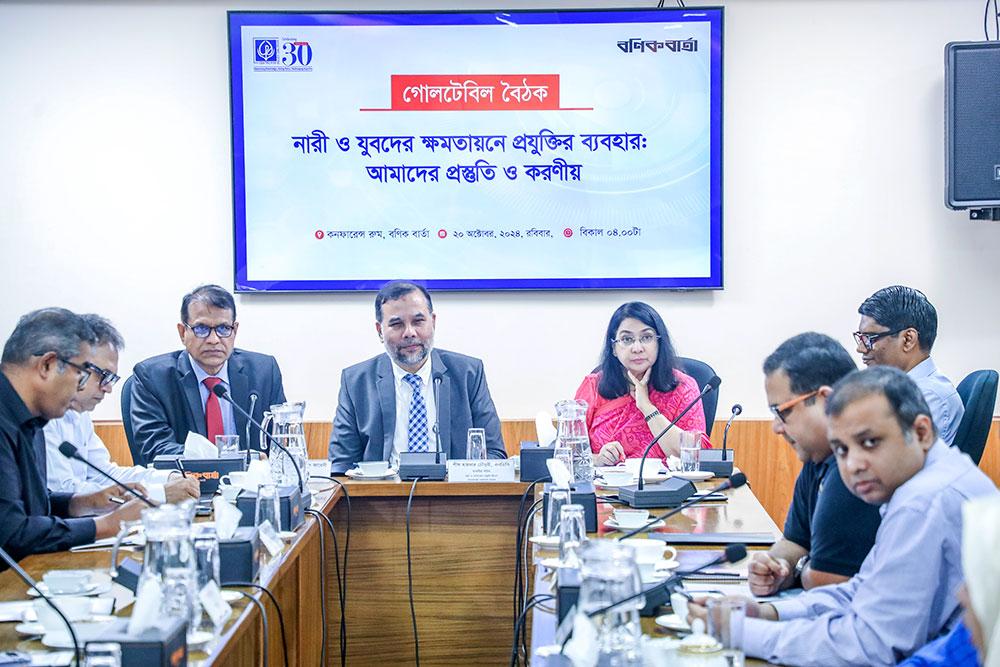
With an average age of 27, Bangladesh has a large population of youth, representing a vibrant and substantial portion of the country’s workforce. This demographic presents both a significant opportunity for economic growth and a challenge in terms of providing adequate education, skills, and employment opportunities. In an economy like ours, which could ideally benefit from such a population, the truth is quite the reverse. The national level figures of unemployment hover around 3 per cent while it is the youth unemployment rates that have escalation affecting this economy in fundamental aspects.
Another hurdle is the Not in Employment, Education, or Training (NEET) challenge. The 2022 labour force survey suggests that people aged 15 to 24 years who are neither employed nor students constitute almost 40 per cent, with women accounting for 61.7 per cent, compared to about 18.6 per cent of men. This dreadfully high figure illustrates a large proportion of Bangladeshi youths who hardly take part in any productive activities. Thus, the question arises for policymakers is that how can these individuals be absorbed into the labour market?
With this question the roundtable discussion on ‘The Use of Technology in Empowering Women and Youth: Preparations and Responsibilities’ began at the Bonik Barta premises. The Executive Director of the Centre for Policy Dialogue (CPD), Dr Fahmida Khatun, delivered the keynote presentation with participation from business leaders, academics and researchers, students, public sector officials and media professionals.
Dr Fahmida Khatun addressed the issues of unemployment among the youth and highlighted ‘For those who are employed, many find themselves in the informal sector, where job security is minimal, and incomes are often insufficient to meet basic needs. She called for the formalisation of these jobs and the creation of decent work opportunities, recommending that technology can help play a transformative role in this process.
The newly appointed Secretary of the Information and Communication Technology Division, Mr Shish Haider Chowdhury, stated ‘Bridging the digital divide remains a pressing challenge. With a population of 118 million, this country possesses immense potential and resources. However, the real challenge lies in connecting these elements, which is hampered by a lack of coordination across various sectors. Addressing this gap is crucial for our progress’.
The Secretary of the Ministry of Youth and Sports, Md. Rezaul Maksud Jahedi, highlighted a striking contrast in digital access: ‘In Singapore, the per capita internet usage stands at 555 Kbps, whereas in Bangladesh, it is just a mere 0.5 Kbps. This stark digital disparity is something we must work together to reduce’. He emphasised that the challenges within the technology sector stem from a troubling trend: the prioritisation of politicisation over professionalism.
The Director General of the Department of Youth Development, Dr Gazi Md Saifuzzaman, said, ‘We train approximately three hundred thousand people annually through our training programmes, with an additional one to two hundred thousand participating in other projects. Through our ongoing infrastructure initiatives, we aim to reach a total of nine hundred thousand individuals over the next three years, maintaining an annual training target of three hundred thousand’.
Mr Fahim Mashrur, CEO of bdjobs.com, stated, ‘The problem is that digital tools are being used in unproductive sectors of the economy and for destructive purposes. Youth are getting involved in online betting, yet we seem unconcerned about this. The government attempted to curb it through policing, but that will never be possible’. He suggested that since the transactions are happening through mobile finance and banking, the Bangladesh Financial Intelligence Unit (BFIU) can easily put a stop to this.
Coordinator of the Anti-Discrimination Student Movement, Ms Umama Fatema, stated, ‘It is essential to have a clear vision of where the government wants to see the youth in the next twenty years. If this is not clear, no matter how much input is given, there will be no results’.
Mr Shams Mahmud, Managing Director of Shasha Denims and Director of BGMEA, said, ‘During COVID, many female garment workers returned to their villages and started their own businesses. They need training to run micro-businesses for empowerment, but such opportunities are unavailable.
Mr Fahim Ahmed, Managing Director and CEO of Pathao Limited, stated, ‘Our internet costs are excessively high and the quality is very poor, resulting in lower data usage. This is due to complex telecom regulations, unnecessary licensing, and a hefty tax structure. We pay extra tax on cigarettes while telecom companies face similar taxation. The pricing mechanism prioritises voice over data. Unless these issues are resolved, technology will remain unaffordable and underused’.
‘Our youth are working, but they are not getting investments. Why not?’ asked the founder and CEO of Chaldal.com, Mr Waseem Alim. He stated ‘We have lost $60 billion in the banking sector. We are investing without thinking. However, we are not investing in areas that will create new employment opportunities. We need to experiment and be bolder here’.
Mr Kazi Faisal Bin Seraj, Country Representative of The Asia Foundation Bangladesh, said, ‘Many incentives were provided to women entrepreneurs during the pandemic, but the outcomes were minimal. Therefore, we should think more about policymaking. Digital security is also very important in terms of empowerment. Cybersecurity is a concern. Since we want to bring more youth and women into the digital economy, we need to consider how they can conduct business safely in the digital realm.’
Mr Dewan Hanif Mahmud, Publisher and Editor of Bonik Barta, stated, ‘The biggest aspect of this generation is that they are empowered by technology. Greater participation of youth and women in technology will create more job opportunities. We need to think about how to create job opportunities for them.’
The discussion concluded with several recommendations from participants across various sectors.



